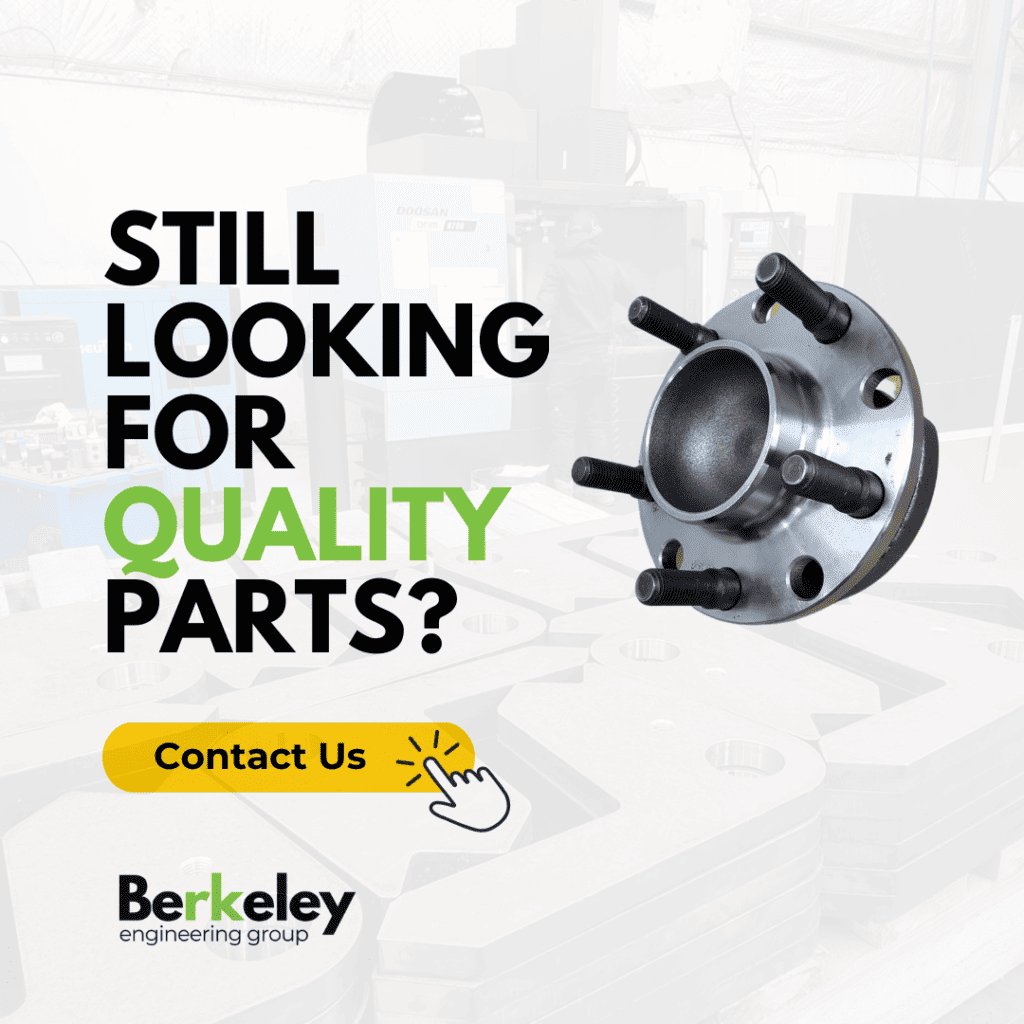
Medical-Grade Metal Fabrication: What Makes It Different?

When it comes to healthcare, every component must perform exactly as intended. From surgical tools to mobility aids, medical equipment depends on fabrication processes that go far beyond what is acceptable in general manufacturing. Unlike other industries, where small imperfections might simply affect appearance or efficiency, in the medical device industry flaws can compromise safety, patient outcomes, and even lives.
Medical metal fabrication sits at the intersection of engineering precision and regulatory rigour. Materials must be carefully chosen, surfaces kept free of contaminants, and production processes validated against the strictest global standards. As the demand for advanced medical devices and diagnostic tools grows, manufacturers face mounting pressure to deliver quality, reliability, and innovation at scale. Understanding what makes medical-grade fabrication different is essential for any organisation involved in healthcare supply chains.
Key Takeaways
- Medical-grade fabrication directly impacts patient safety and treatment outcomes.
- Precision in materials, specifications, and cleanliness is non-negotiable.
- Compliance with government regulations and international ISO standards ensures reliability.
- Advanced manufacturing methods like CNC machining and laser cutting support innovation.
- Clean surfaces and contamination control protect patients from complications.
- A reliable fabrication partner helps healthcare providers meet strict performance demands.
Summary Table
| Key Element | What It Involves | Impact on Healthcare |
|---|---|---|
| Material Selection | Use of stainless steel, titanium, and biocompatible alloys | Ensures durability and safe interaction with body |
| Exact Specifications | Tight tolerances and CNC machining | Devices perform as intended with minimal risk |
| Regulatory Compliance | ISO and FDA-driven documentation and testing | Protects patients and reduces approval delays |
| Cleanliness & Surface Control | Sterile finishes, contamination prevention | Prevents infection and supports safe procedures |
| Advanced Manufacturing & Innovation | CNC machines, automation, and diagnostic solutions | Drives efficiency and enables new treatments |
| Healthcare & Patient Support | Reliable supply of safe medical equipment | Improves outcomes and builds trust in the system |
Why Medical-Grade Fabrication Matters
The stakes in medical metal fabrication are higher than in almost any other field. Unlike industrial or consumer products, the performance of medical equipment and devices has a direct influence on patient health and safety. A surgical tool that fails mid-procedure, or a diagnostic machine that produces inaccurate results, can lead to delays, complications, or even loss of life.
This is why fabrication for the medical industry requires standards that go beyond traditional practices. Every part, from simple fasteners to complex implantable devices, must be manufactured to exact specifications, with rigorous testing to confirm compliance. These requirements are not driven by preference but by necessity: the ability of healthcare providers to treat ailments, support recovery, and maintain mobility depends on reliable, well-made equipment.
For procurement teams, understanding why this level of precision and oversight matters is key to selecting the right fabrication partner. In healthcare, fabrication quality is not optional — it’s a matter of trust and survival.
Materials, Specifications, and Cleanliness
At the core of medical metal fabrication is the selection of the right materials. Not all metals are suited for the human body or medical environments. Stainless steel and titanium are the most commonly used, valued for their durability, corrosion resistance, and biocompatibility. These metals can withstand repeated sterilisation and exposure to high heat, making them ideal for surgical instruments, diagnostic systems, and long-term implants.
Equally important is adherence to exact specifications. In the medical device industry, even the smallest deviation in measurement can compromise performance or safety. Modern fabrication relies on CNC machines and precision tooling to deliver parts that consistently meet strict tolerances. Whether for surgical tools, mobility aids, or diagnostic equipment, each component must be manufactured to perform reliably under demanding conditions.
Cleanliness is another non-negotiable factor. During the fabrication process, every stage must prevent the introduction of contaminants that could compromise patient safety. Surfaces are polished, edges refined, and coatings applied where necessary to ensure sterility. Maintaining this standard requires not only the right technology but also disciplined procedures and an experienced team trained in medical-grade practices.
The combination of high-quality materials, precision fabrication, and contamination control sets medical-grade work apart from other industries. It ensures that every device and piece of equipment entering a hospital or clinic can perform safely, helping doctors treat patients without introducing unnecessary risks.
Regulation, Risk, and Quality Control
Every step in medical metal fabrication is shaped by strict oversight. Unlike other industries, the medical device industry is governed by regulatory requirements from bodies such as the FDA and ISO. These frameworks ensure that manufacturers consistently produce safe, reliable devices that perform as intended. Documentation, testing, and traceability are built into the fabrication process, creating a clear record that equipment meets the highest standards before it reaches a hospital or clinic.
One of the main reasons for this level of scrutiny is the need to minimise risk. If a piece of medical equipment fails in use, the consequences can be severe: delayed treatment, harm to the patient, or broader safety issues. Rigorous inspections, material certifications, and functional tests all work to mitigate risks before devices are approved for use.
Quality control is continuous, not occasional. It extends from raw metal inspection through machining, welding, and finishing. Surfaces are carefully examined for imperfections, and machines are calibrated to maintain consistent tolerances. By integrating checks throughout the production cycle, companies reduce errors and maintain compliance with international standards.
Ultimately, strong regulation and quality assurance provide more than compliance — they offer confidence. For doctors, nurses, and patients, that confidence translates into trust in the equipment used in critical procedures, where precision and reliability can mean the difference between recovery and complications.
Advanced Manufacturing and Innovation in MedTech
The demand for high-performing medical devices has pushed the manufacturing sector to adopt advanced techniques that ensure both efficiency and precision. In medical metal fabrication, technologies such as CNC machining, robotics, and laser cutting play a critical role in producing parts that meet the exact specifications required by surgeons and healthcare providers. These methods allow fabricators to create components with complex geometries, fine finishes, and consistent quality across large production runs.
Innovation in fabrication also supports the development of new medical equipment. From diagnostic equipment to surgical tools, the ability to produce intricate parts quickly enables faster product cycles and supports the growth of the global medtech market. For example, implantable devices demand a high degree of precision and smooth finishes to integrate safely with the body. Without advanced machining and surface finishing, such designs would be impossible to achieve.
Beyond technical capability, modern fabrication integrates digital systems for monitoring and validation. Smart machines track performance, while automated quality checks reduce error rates. This not only supports regulatory compliance but also shortens lead times — helping companies bring safe, reliable devices to market more quickly.
By embracing innovation, fabricators can offer tailored solutions that align with the healthcare industry’s evolving needs. For hospitals, doctors, and most importantly patients, these advances mean access to safer, more reliable treatments built on a foundation of precision engineering.
Supporting Healthcare and Patients
At its core, medical metal fabrication is about more than machinery or standards — it is about supporting the people who rely on the outcomes. Every part, from mobility aids to surgical instruments, plays a role in helping patients recover, maintain independence, or undergo life-saving procedures. The precision and quality of fabricated equipment directly affect the ability of doctors to diagnose, treat, and monitor a wide range of health conditions.
For the medical industry, dependable fabrication underpins the trust between healthcare providers and their patients. A diagnostic device must deliver accurate tests every time; a mobility aid must offer long-term reliable performance; a surgical tool must withstand repeated sterilisation without degrading. These demands highlight the importance of working with fabricators who can consistently meet specifications and adapt to evolving healthcare needs.
Ultimately, medical-grade fabrication ensures that patients receive safe, effective treatment while healthcare workers can carry out their jobs with confidence. By maintaining high standards, the fabrication sector reinforces the foundation of modern healthcare.
Final Thoughts
Medical metal fabrication stands apart because of the stakes involved: human life, safety, and trust. Every stage — from material selection to compliance and innovation — is designed to ensure that medical equipment and devices perform flawlessly in critical environments. For the medical industry, precision and reliability are non-negotiable. For patients, they mean safer treatments, improved mobility, and better outcomes. By holding to the highest standards, fabricators not only meet regulatory obligations but also deliver lasting value to healthcare providers who rely on their work every day.
FAQs Answered
1. What materials are most commonly used in medical-grade metal fabrication?
Materials such as stainless steel (especially 316L), titanium, and aluminium are widely used due to their durability, corrosion resistance, and biocompatibility. These properties make them ideal for surgical instruments, implantable devices, and diagnostic equipment, where reliability and patient safety are paramount.
2. Why is cleanroom-level cleanliness necessary for medical device manufacturing?
Cleanroom environments are essential to prevent contamination that could compromise patient safety. Even microscopic particulates can cause infections or device malfunctions. Controlling air quality, surfaces, and operator practices ensures that every product meets strict medical standards.
3. How do regulatory requirements impact medical device manufacturing timelines?
Regulatory compliance, including adherence to ISO 13485, FDA standards, and government quality systems, adds important steps such as documentation, audits, and traceability checks. While this can extend timelines, these processes ensure patient safety and approval for use in global healthcare markets.
4. What metal fabrication methods are best suited for providing the precision required in surgical tools?
Surgical tools require ultra-tight tolerances and smooth finishes. Methods such as CNC machining, laser cutting, electrical discharge machining (EDM), and precision grinding are particularly effective. These processes enable the creation of intricate shapes while ensuring consistency and performance.
5. How does medical-grade metal fabrication help reduce risk in healthcare outcomes?
Risk is mitigated through rigorous testing, inspection, and traceability across the fabrication process. Each material and component is validated for compliance and performance, reducing the chance of complications. This gives healthcare professionals confidence that the devices they rely on will perform safely and consistently.
Who are we?
Berkeley Engineering has a rich history of producing high-quality components since 1931. Our CNC machining operations in Australia offer a comprehensive range of services, including CNC turning, metal fabrication, plasma cutting and more. We are dedicated to delivering custom components of the finest quality for your projects. Whether you require low or high volume production, our manufacturing services are cost-effective and efficient, with turnaround times as fast as one business day.
Contact Us:
We'd love to discuss your next project and how our partnered solutions can scale with your business operating needs.


